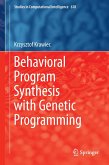Genetic Regulatory Networks (GRNs) in biological organisms are primary engines for cells to enact their engagements with environments, via incessant, continually active coupling. In differentiated multicellular organisms, tremendous complexity has arisen in the course of evolution of life on earth.
Engineering and science have so far achieved no working system that can compare with this complexity, depth and scope of organization.
Abstracting the dynamics of genetic regulatory control to a computational framework in which artificial GRNs in artificial simulated cells differentiate while connected in a changing topology, it is possible to apply Darwinian evolution in silico to study the capacity of such developmental/differentiated GRNs to evolve.
In this volume an evolutionary GRN paradigm is investigated for its evolvability and robustness in models of biological clocks, in simple differentiated multicellularity, and in evolving artificial developing 'organisms' which grow and express an ontogeny starting from a single cell interacting with its environment, eventually including a changing local neighbourhood of other cells.
These methods may help us understand the genesis, organization, adaptive plasticity, and evolvability of differentiated biological systems, and may also provide a paradigm for transferring these principles of biology's success to computational and engineering challenges at a scale not previously conceivable.
Engineering and science have so far achieved no working system that can compare with this complexity, depth and scope of organization.
Abstracting the dynamics of genetic regulatory control to a computational framework in which artificial GRNs in artificial simulated cells differentiate while connected in a changing topology, it is possible to apply Darwinian evolution in silico to study the capacity of such developmental/differentiated GRNs to evolve.
In this volume an evolutionary GRN paradigm is investigated for its evolvability and robustness in models of biological clocks, in simple differentiated multicellularity, and in evolving artificial developing 'organisms' which grow and express an ontogeny starting from a single cell interacting with its environment, eventually including a changing local neighbourhood of other cells.
These methods may help us understand the genesis, organization, adaptive plasticity, and evolvability of differentiated biological systems, and may also provide a paradigm for transferring these principles of biology's success to computational and engineering challenges at a scale not previously conceivable.
From the reviews:
"I found this book interesting and engaging, even if brief and concise. ... The content is largely about aspects of evolvability, adaptability, variability, and robustness of synthetic dynamic networks as computationally simulated. ... I found this to be an enjoyable, brief volume with exciting content that is technically precise but highly accessible to advanced undergrads, as well as systems and computational biology researchers." (Hector Zenil, Computing Reviews, August, 2013)
"I found this book interesting and engaging, even if brief and concise. ... The content is largely about aspects of evolvability, adaptability, variability, and robustness of synthetic dynamic networks as computationally simulated. ... I found this to be an enjoyable, brief volume with exciting content that is technically precise but highly accessible to advanced undergrads, as well as systems and computational biology researchers." (Hector Zenil, Computing Reviews, August, 2013)








